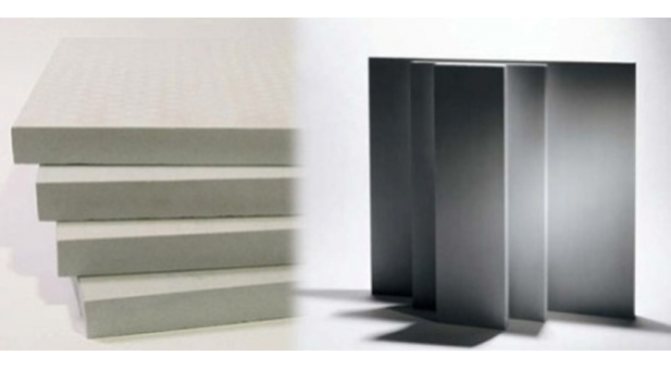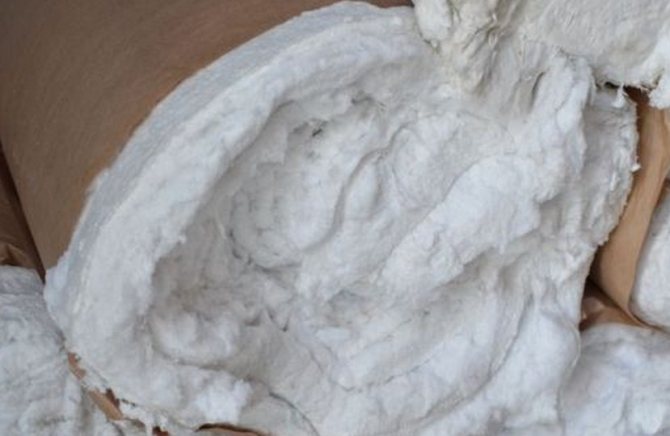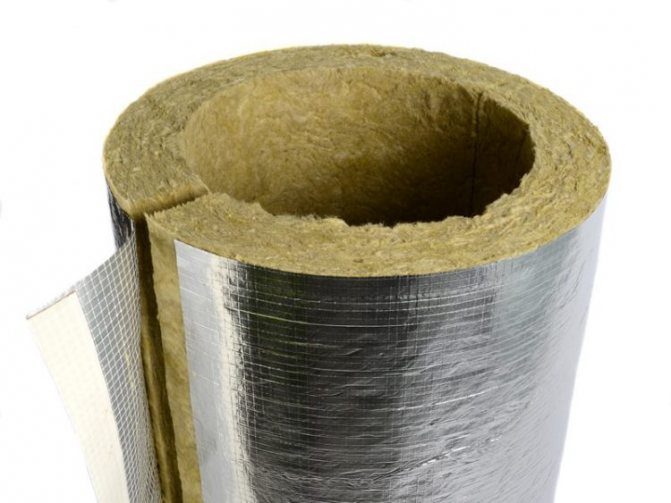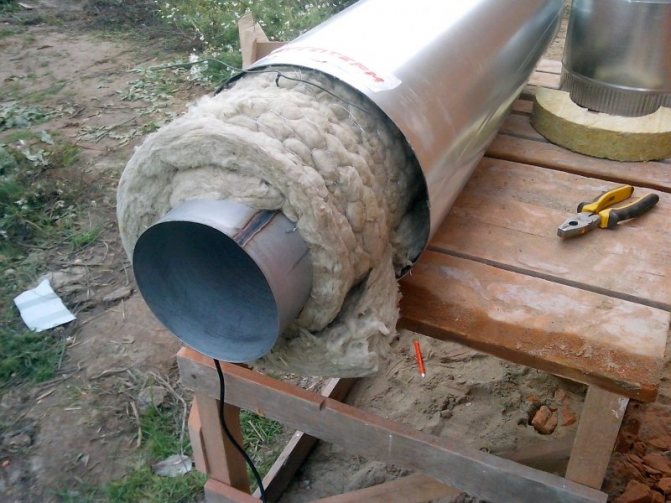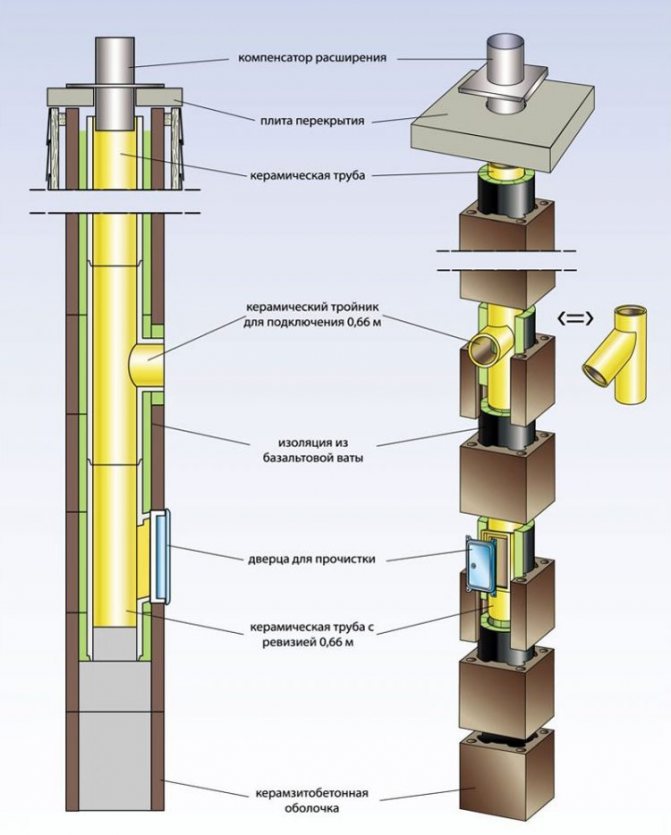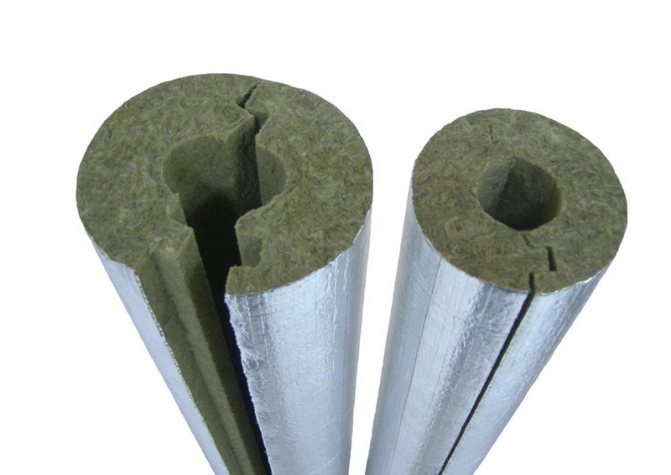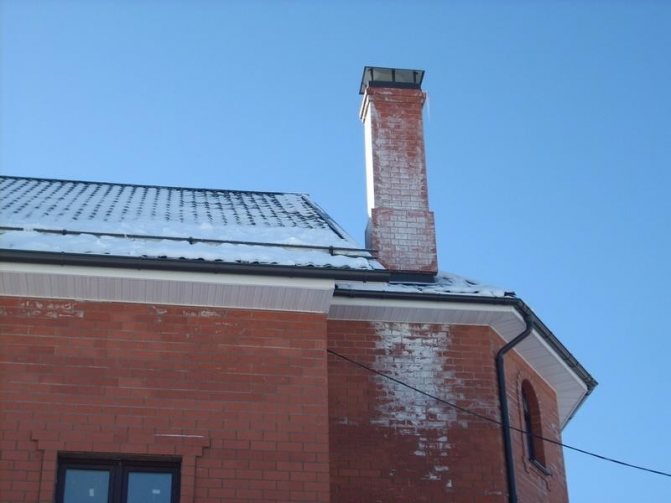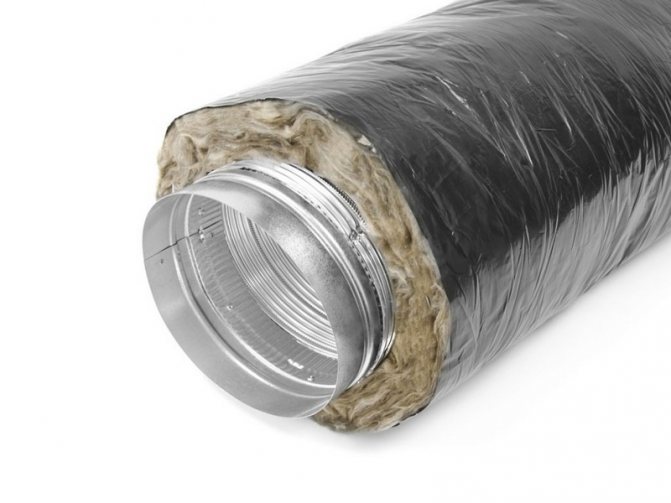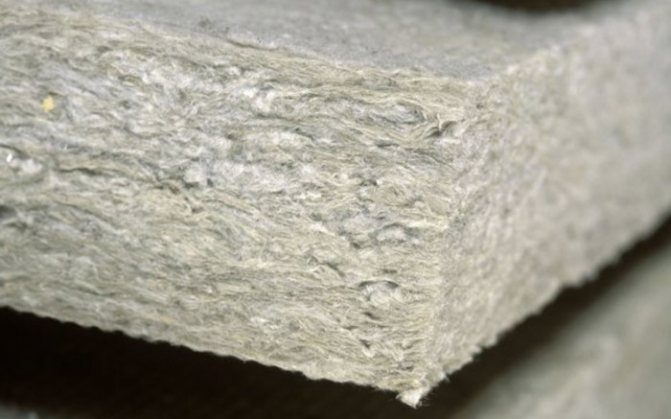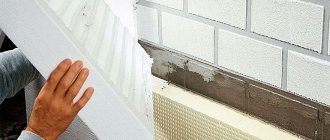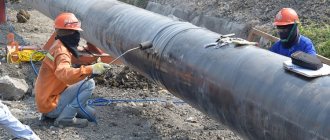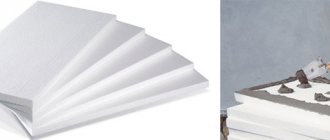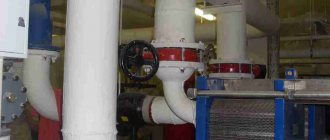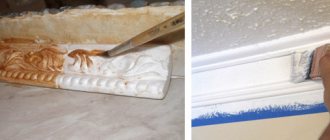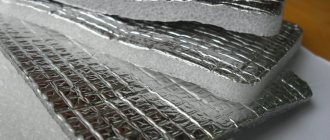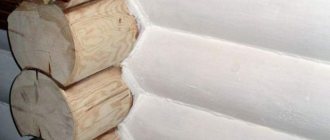Heat insulation for stoves: features of insulation between the wall and the stove, insulation of the chimney
Thermal insulation of the oven is actually a much more important process than it might seem at first glance. Unfortunately, many owners of private houses neglect stove insulation, considering it an unnecessary measure. In this article, we will look at the reasons why furnaces are insulated and how they are insulated.
The heat insulation of the stove protects the walls of the building from the heat of the stove.
Why insulate the oven
In the furnace structure, the following is subject to insulation:
Chimney insulation is important for several reasons:
- Insulation can prevent the chimney from quickly cooling down, as a result of which the heat in your house will remain for a longer time.
- A layer of insulation prevents heating of household structures.
- Condensate accumulates in non-insulated pipelines, which is not just damp, but a very aggressive substance. The fact is that during the combustion process moisture and acids are released from the fuel, which mix and settle on the walls of the pipeline, leading to the slow destruction of not only the heating system, but also the structural elements of the building.
Do-it-yourself chimney insulation.
- Those walls of the stove that are located in the immediate vicinity of the wall of the house. Thermal insulation of the wall from the stove is also a very important process, since the heat of the stove leads to cracking of the brick walls and their subsequent destruction. In block or wooden houses, the stove must also be insulated from the walls by installing insulation.
We make furnace insulation
Insulation methods depend on several factors. For example, if we talk about a chimney, then it all depends on the material and design features. Consider modern methods of warming furnace structures.
Thermal insulation between the wall and the stove
Many home craftsmen are interested in insulating the stove from the wall. And let the insulation of the stove be neglected at first, over time the results of the effect of the stove heat on the adjacent wall become apparent. And the only way to protect the wall from destruction is thermal insulation.
There are several options for this:
- Perhaps the simplest way, which is distinguished by its low price and ease of execution.
- Lay asbestos slabs on the wall.
- Mount the foil on top of the plates, thus creating a reflector.
Insulation of the wall in the steam room.
Advice! This method is applicable when the stove is far from the wall (50 cm or more). If the distance is less, then asbestos cannot be used, since it emits harmful substances when overheated.
Naturally, many will not like this method also for the reason that the foil wall does not have a very aesthetic appearance.
- The next method is more complicated, but much more efficient. The instruction includes the following steps:
- You fix metal hangers for vertical lathing on the wall.
- Wooden slats should be attached to the suspensions, which should be 2-3 cm wider than the insulation plates.
- Place mineral wool slabs between the slats.
- On top of the mineral wool, a reflector is nailed to the slats.
Advice! Since mineral wool is afraid of water, it is advisable to use not ordinary foil, but a material with waterproofing properties, for example, penofol.
- We mount heat-resistant hot-smoked sheets on the reflector.
- Any heat-resistant facing material can be mounted on top of the drywall: mosaic, tiles, stone, etc.
Wall insulation: 1.Mineral wool slab; 2. Waterproofing; 3. Cladding.
Thus, reliable thermal insulation for the stove is created, as a result of which the wall will no longer be heated.
Chimney thermal insulation
The chimney can be insulated with various materials, namely:
- Mineral wool insulation is one of the most popular materials these days. It has a number of unique positive characteristics, but it is afraid of moisture, which is why a waterproofing layer is required when laying mineral wool.
- Glass wool. Has properties similar to mineral wool.
- Brick. Whole or chipped bricks are very often used as insulation.
- Slag slabs or mortar.
These are the most acceptable thermal insulation materials for stoves, which provide a really high level of insulation.
As mentioned above, the insulation of the chimney depends on the material from which the pipe is made.
- Asbestos-cement chimney.
- We clean the pipe surface from dirt and dust.
- We place the mineral wool in a steel casing that will be put on the pipe. Such a casing can be made of roofing or galvanized iron. It consists of several parts, each of which does not exceed 1.5 meters in length, which makes it easier to tamp the insulation material.
Advice! The diameter of the casing should be 12 cm larger than the diameter of the pipe.
- We put the first part of the casing on the chimney, evenly distributing the insulation.
Mineral wool insulation is one of the most popular materials these days. It has a number of unique positive characteristics, but is afraid of moisture, which is why a waterproofing layer is required when laying mineral wool.
- Glass wool. Has properties similar to mineral wool.
- Brick. Whole or chipped bricks are very often used as insulation.
- Slag slabs or mortar.
These are the most acceptable thermal insulation materials for stoves, which provide a really high level of insulation.
As mentioned above, the insulation of the chimney depends on the material from which the pipe is made.
- Asbestos-cement chimney.
- We clean the pipe surface from dirt and dust.
- We place the mineral wool in a steel casing that will be put on the pipe. Such a casing can be made of roofing or galvanized iron. It consists of several parts, each of which does not exceed 1.5 meters in length, which makes it easier to tamp the insulation material.
Advice! The diameter of the casing should be 12 cm larger than the diameter of the pipe.
- We put the first part of the casing on the chimney, evenly distributing the insulation.
Mineral wool insulation is one of the most popular materials these days. It has a number of unique positive characteristics, but is afraid of moisture, which is why a waterproofing layer is required when laying mineral wool.
- Glass wool. Has properties similar to mineral wool.
- Brick. Whole or chipped bricks are very often used as insulation.
- Slag slabs or mortar.
These are the most acceptable thermal insulation materials for stoves, which provide a really high level of insulation.
As mentioned above, the insulation of the chimney depends on the material from which the pipe is made.
Advice! For the first layer, the consistency of the mortar should be more liquid than for subsequent layers.
- White the pipe with lime or chalk paint.
This method of insulating the chimney pipe allows you to reduce heat loss by an average of a quarter.
insulation of the chimney pipe allows you to reduce heat loss by an average of a quarter.
insulation of the chimney pipe allows you to reduce heat loss by an average of a quarter.
heat insulation of chimneys. A more complex, but also more effective approach.
- Cut the mineral wool to fit the chimney.
- Fix the heat insulator to the pipe using metal tape or wire. Studs with washers are also suitable as fixing.
- Cover the chimney with asbestos cement slabs or bricks. The thickness of the facing slabs must be at least 4 centimeters.
- Plaster the surface.
This method of lining chimney pipes allows:
- Reduce heat loss by half.
- Increase the density of the chimney.
- Prevent the formation of condensation, and, accordingly, the destruction of the chimney.
- Increase the level of safety when using heating systems.
heat insulation of chimneys. A more complex, but also more effective approach.
- Cut the mineral wool to fit the chimney.
- Fix the heat insulator to the pipe using metal tape or wire. Studs with washers are also suitable as fixing.
- Cover the chimney with asbestos cement slabs or bricks. The thickness of the facing slabs must be at least 4 centimeters.
- Plaster the surface.
This method of lining chimney pipes allows:
- Reduce heat loss by half.
- Increase the density of the chimney.
- Prevent the formation of condensation, and, accordingly, the destruction of the chimney.
- Increase the level of safety when using heating systems.
- Cut the mineral wool to fit the chimney.
- Fix the heat insulator to the pipe using metal tape or wire. Studs with washers are also suitable as fixing.
- Cover the chimney with asbestos cement slabs or bricks. The thickness of the facing slabs must be at least 4 centimeters.
- Plaster the surface.
This method of lining chimney pipes allows:
- Reduce heat loss by half.
- Increase the density of the chimney.
- Prevent the formation of condensation, and, accordingly, the destruction of the chimney.
- Increase the level of safety when using heating systems.
Source: banya-ili-sauna.ru
Briefly about the design of the fireplace
The design consists of two main parts - the firebox (this is the base of the fireplace) and
... Between them is the so-called tooth. Combustion products passing through it sharply change direction. There are also additional details: latches, grates, doors, dampers, etc.
Fireplaces are available with open and closed fireboxes. The options with an open firebox have a relatively low efficiency (10-25%). They are distinguished by an increased fire hazard, but they make it possible to contemplate an open fire and, along the way, improve the ventilation of the room.
A fascinating picture of a live fire is the main advantage of a fireplace
For fireplaces with a closed firebox, the efficiency is higher, and the risk of fire from them is much less.
Types of chimneys and their features
The most important part of the fireplace is
chimney
... This is a vertical sealed channel for creating thrust. Draft is needed to remove fuel combustion products, as well as to supply oxygen and ensure air exchange in the room.
The chimney must be fireproof and withstand the effects of:
- high temperature,
- chemically aggressive waste gases,
- a mixture of soot and condensate formed during fuel combustion.
Therefore, they are made from steel, ceramic or glass pipes or are traditionally laid out from solid clay bricks. Let's take a quick look at all these types:
A brick chimney is the least expensive, but not the most efficient option. And the process of laying it is quite laborious. Recently, for better removal of flue gases, an insert is inserted into the brick chimney - a special steel pipe.
The steel chimney, the most common and available today, consists of two round pipes of different diameters. The outer tube is made of stainless steel or galvanized steel, and the inner tube is stainless. Such a chimney is called coaxial.We are already a little familiar with it from the article Choosing, installing and caring for a chimney. Fiber insulation with a thickness of at least 50 mm is located between the pipes. The steel prefabricated chimney is quite simple to install, relatively light and does not require the construction of a foundation. Therefore, I immediately want to warn readers against low-quality homemade products in this area. The fact is that in the construction markets you can find "self-made" coaxial chimneys. Trying to save money, "craftsmen" put ordinary heat-resistant wool instead of specially designed heat-resistant wool in the gap of such a chimney. The heat resistance limits of these materials are incomparable. The conclusion suggests itself.
Coaxial chimney
A more complex modular ceramic chimney consists of 3 layers: an inner ceramic liner, external elements (blocks) made of lightweight concrete and insulation between these layers. This design is more durable and provides a high level of thermal protection. However, the installation of a ceramic chimney requires high qualifications of the performer.
We invite you to familiarize yourself with Finishing the attic with OSB slabs - About the roof and facade work
Modular ceramic chimney
A glass chimney is the most expensive and complex option, but it looks very impressive and stylish. It is usually used for island fireplaces. Glass chimneys are characterized by resistance to corrosion and high temperatures, as well as good draft and thermal efficiency. The installation of such a chimney is trusted only by professional performers, since the highest quality of work is required here.
Chimney thermal insulation
The chimney must be securely insulated. Between it and the structures of the house (overlap, exit to the roof) should be provided
fire-fighting cut from non-combustible material
(for example, stone wool). The thickness of the cut depends on the type of fireplace and the chimney design.
Thermal insulation of the chimney is necessary in order to:
- prevent the heating of walls in contact with the chimney;
- avoid rapid cooling of combustion products due to cooling of the chimney;
- keep the house warm (i.e. increase the efficiency of the fireplace);
- prevent the formation of condensation inside the chimney. Condensation of water vapor and tar will inevitably appear when the temperature of the flue gases decreases, if the thermal protection is insufficient.
Brick chimneys are insulated with stone fiber rolls, but more often they are plastered using a reinforcing mesh. Round metal and ceramic pipes are wrapped with a roll of thermal insulation and covered with a sheet of stainless steel on top. Sometimes, instead of a metal sheet, plastering on a grid is also used. We will talk about insulation materials below.
Why insulate the oven?
When it comes to thermal insulation of fireplaces, the question arises about its need. If there is no time, money and desire to carry out additional work with the stove, then the insulation can not be carried out. But to increase efficiency and increase the operational life, work is necessary and important. And for what exactly it is required to make insulation, it is worth considering for each detail separately.
Chimney:
- to prevent heating of walls located near the pipe;
- to increase the cooling time of the pipe, the heat from which is evenly distributed in the room;
- to prevent the accumulation of condensation.
Thermal insulation is also required to protect the walls adjacent to the fireplace. It is important to strengthen the supporting and interior structure to prevent fire and damage to the finish along with the base. Insulation also increases efficiency by distributing heat quickly throughout the room.
Modern insulation materials
Thermal insulation of fireplaces and walls to protect against a hot firebox is carried out with several materials, many of them have been developed recently and are used mainly by professionals:
- Basalt wool with a foil surface - withstands high temperatures (up to +750 degrees). Combines well with other chimney pieces.
- Fibrous gypsum sheet - obtained by pressing cellulose fiber and natural gypsum. Differs in high strength, ability to retain properties under any operating conditions, moisture resistance. It is used for heat insulation of the furnace and the furnace box, extending its service life. Among the disadvantages - the sheet cannot be bent, therefore it is not used for the chimney.
- Calcium silicate is a material with high thermal insulation properties. Used when arranging the firebox and fireplace box. Calcium silicate is suitable for stoves that will be decorated with shelves and niches. Thermal insulation prevents overheating of additional elements, like the fireplace itself. The material fits well on any surface, goes well with putty. Among the disadvantages is the high cost. But when arranging a hearth in a private house, silicate is indispensable.
- Supersil is a fabric heat-insulating material with an operating temperature of up to 1200 degrees. It is based on silicon oxide, which is environmentally friendly and safe. When heated, the material does not emit hazardous vapors and is suitable for insulating firebox, hood and walls. The high cost stops you from using superpower.
Basalt insulation brands for chimney insulation
Facing basalt slabs look aesthetically pleasing and provide good fire protection. In addition, this material gives off heat for a long time after heating. It is possible to clad with this material both the brick screen and the wall itself over the insulating sheets.
Fire safety should not be neglected - the consequences of carelessness can be tragic. The modern building materials market allows you to choose an option according to your means and taste, while providing reliable protection against fire.
Thermal insulation of fireplaces and walls is carried out in several stages
- Training. Calculate in advance how many slabs you will need to minimize costs and reduce waste.
- Wall insulation with mineral wool. The wall next to the fireplace is exposed to high temperatures. As a result of strong heating, the structure is exposed to fire and damage. To keep the heat inside the firebox and not go outside, mineral wool with a foil surface is used. Fix the boards with high-temperature glue or metal stainless steel dowels. This method of thermal insulation is suitable for fireplaces located at a distance of no more than 50 centimeters from the wall.
- Insulation by sandwich construction. If you want to insulate walls that are more than 50 centimeters from the fireplace, then a multilayer structure is made, consisting of the following materials: metal batten for battens, wooden slats, mineral wool slabs, reflector (foil), heat-resistant plasterboard, facing material (tiles, stone ). This method prevents the walls from overheating, while maintaining their attractive appearance (which cannot be said about the nailed mineral wool).
- Thermal insulation of wood and stone elements. It is carried out to protect against overheating and further damage. For this, pieces of the required size are cut from the mineral wool and glued to the details from the side adjacent to the fireplace.
- Chimney thermal insulation. It is carried out depending on the type of construction.
Fireproof wall cladding
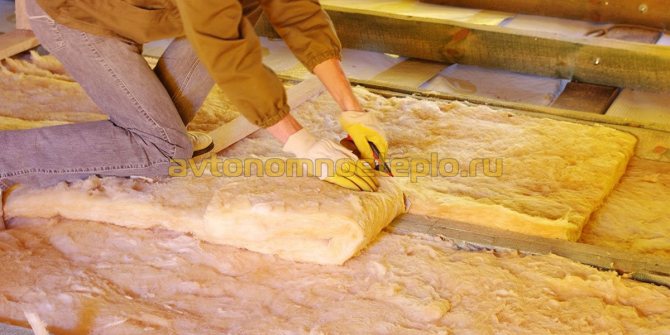
To prevent spontaneous combustion of the walls adjacent to the furnaces, it is required to install special sheathing made of non-combustible materials with thermal insulation properties.
Thermal insulation for furnaces in this case is carried out in two ways:
- For cladding, materials are used that have reflective properties and are resistant to high temperatures.
- The heat-insulating oven sheathing is covered with heat-resistant tile cladding.
Good reflective qualities are shown by metal sheets covering non-combustible thermal insulation sheets. It is best to use stainless steel, since galvanized steel emits toxic substances when heated.
It is recommended to polish the outer surface of the metal sheets, as this promotes better heat energy reflection.
The following materials are used as thermal insulation:
- basalt cardboard;
- basalt wool;
- minerite;
- asbestos cardboard.
In accordance with SNiP 41-01-2003, the cladding is installed in the following sequence:
- Installation of insulation with a ventilation gap of 2 to 3 cm.The thickness of the insulating material is no more than 2 cm and no less than 1 cm.
- Installation of a metal sheet.
- Maintain a distance between the oven and the casing of at least 38 cm.
Ceramic bushings are used to fasten materials to the wall: they allow you to maintain the required gap and are resistant to fire. If it is not possible to maintain the specified distance between the furnace and the casing, then two layers of heat-insulating sheets should be used. For example, two sheets of minerite are attached using ceramic bushings. The distance between them is 2-3 cm. The outer sheet is covered with stainless steel.
We offer you to familiarize yourself with our own sauna stoves - step by step instructions!
The design of a room or bath does not always allow installing metal cladding. Often it will not fit into the interior of the room. In this case, you can resort to cladding with a facing of heat-resistant tiles, which is attached with a special glue that is resistant to high temperatures. We list suitable materials for cladding:
- terracotta tiles;
- porcelain stoneware;
- tiles;
- clinker tiles;
- talcochlorite.
During installation, they are guided by the following rules:
- The ventilation gap between the wall and the refractory sheet should be 2-3 cm.
- Refractory tiles are attached to the installed sheet using special adhesive mixtures.
- The oven should be located no closer than 15 cm from the tile surface.
The following are suitable as sheet refractory materials for cladding with cladding:
- minerite;
- refractory gypsum board containing fiberglass;
- glass-magnesium sheet.
The cladding will help not only to beat the design of the room and maintain a uniform style, but also to reduce the permissible distance between the stove and the wall.
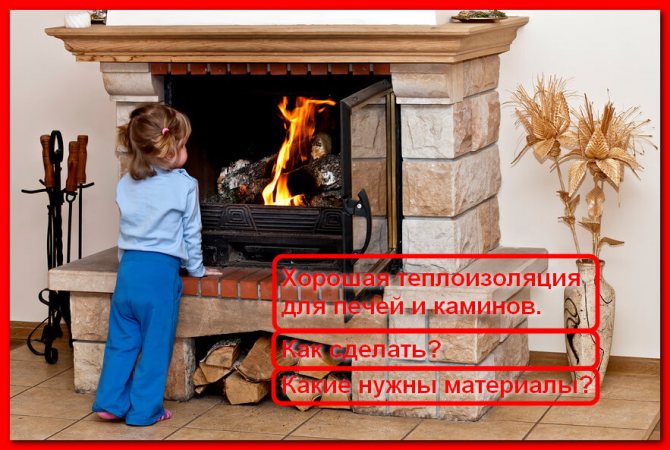

Thermal insulation of the furnace using stainless steel sheathing has several options. By orientation in space, frontal and side screens are distinguished. The recommended distance from the stove to the screen is from 1 to 5 cm. Thanks to such structures, it is possible to achieve a reduction in the intensity of the thermal radiation of a metal stove, since the outer surface of the protective screens heats up to 1000 C.
If the walls of the boiler room are wooden, then they need preliminary treatment with fire retardants. The wall behind the boiler must be sheathed with sheet metal. The rest of the area is finished with sheets of plasterboard or magnesium glass. Then the surface is plastered or covered with ceramic tiles.
How to insulate a chimney
After protecting the walls from the hot fireplace insert, proceed to insulate the pipe. For this, one of the following materials is used:
- mineral wool is the most popular and demanded material, which is convenient and inexpensive to work with;
- glass wool - similar in properties to mineral wool, but it is more difficult to work with it;
- brick - the use of whole and chipped copies is allowed;
- slag slabs - designed for insulation in unstable climatic zones.
If the fireplace and chimney are made of bricks, then the insulation is carried out quickly and with little financial loss. For this, the surface is plastered using a reinforcing mesh.At the joints of the pipe with the roof, make reinforcement - lay an additional layer of brick. This completes the thermal insulation.
It is much more difficult to work with round pipes made of metal and ceramics. These materials overheat during operation of the fireplace, and accidental touching them will inevitably lead to severe burns. Therefore, be sure to take care of the insulation of such pipes. This is necessary to reduce heat loss and keep the pipe intact for a long time.
The given method of thermal insulation increases the efficiency of the chimney, increases the service life of the structure and prevents overheating of the adjacent surfaces. If all the work is done correctly, then re-installation will be required after about 15 years with intensive use of the hearth.
Source: kaminyn.ru
What is insulation for?
Insulation for the chimney does not allow the pipe to freeze, especially at subzero temperatures. It also prevents:
- The destruction of the pipe over time. Combustion and decomposition products negatively affect any, even the most durable and reliable materials. The presence of insulation and the correct structure of the pipe, allows you to avoid malfunctions and deterioration of traction;
- Prevents the possibility that the boiler will fail;
- Avoids icing. Throughout the use of the stove structure, condensation regularly forms in the chimney, whereby dampness arises, which directly affects the state of the structure.
Important: it is necessary to insulate only that section of the pipe that is completely on the street or the chimney completely, in the event that the room is not additionally heated.
In order to familiarize yourself with the proven and best materials in more detail and carry out this procedure on your own, we suggest that you familiarize yourself with the photos located in this article.
Advice: when choosing insulation, give preference to the thickest insulation. The thicker their layer is, the better the thermal insulation will be.


General recommendations for insulation
- The selected material should not be thinner than 5 centimeters;
- When winding, it is necessary to leave a small overlap, which at the next stage is fixed with a special wire;
- The outer layer usually consists of special foil or sheet metal;
- The pipe must be reliably protected from above with a special cap and must not have crevices.
Important: when moisture gets on the heat-insulating material, it completely loses its non-combustible properties.
The price of insulation directly depends on the type, quantity, quality of the selected material and the manufacturer.
Important: it is necessary to take care of the insulation of the pipes even at the design stage, since in the future there may not be enough space for it from the outside.
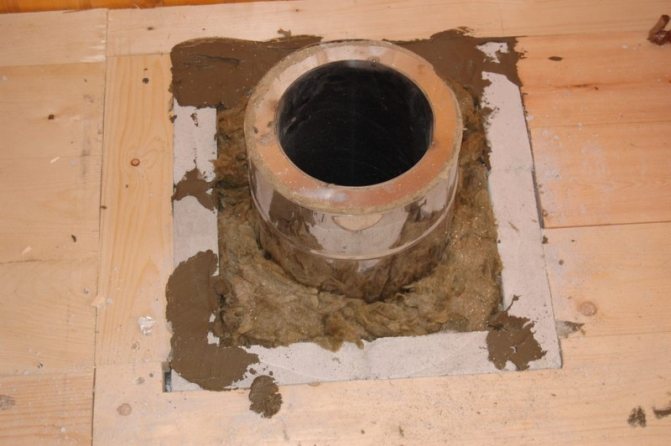

Winding pipes between floors and in the attic


Chimney insulation scheme in size
The main task of heat insulation materials for ovens
The most important aspect when using stoves and fireplaces is fire safety. The structural element responsible for this requirement is high temperature insulation. Saving on it can lead to serious consequences.
Installation work can be done by hand, but it is recommended that such a question be entrusted to qualified specialists. The construction services market is full of similar offers. The choice must be approached extremely meticulously and strictly, because human lives ultimately depend on the quality of work. Companies with an impeccable reputation are preferred. Guest workers or small fly-by-night firms with low prices should not be involved in such important work.
Requirements for materials for thermal insulation
A fireplace is the same stove, only with a decorated chimney and an open firebox on one side. There are no fundamental design features here, therefore the basic approaches to the arrangement of stoves and fireplaces are the same.
Thermal insulation materials are mounted separately to the chimney and separately to the firebox. It must meet the requirements:
- Environmental friendliness;
- Longevity;
- High fire resistance;
- Low thermal conductivity;


The main types of thermal insulation by composition
High-temperature heat-insulating materials for furnaces, depending on the composition, are divided into:
- Backfill and rammed - quartz sand, kaolin, zirconium oxide, various mortars. Most often, it is used in industry, since it is laborious to manufacture, inconvenient in household use;
- Fibrous insulators - felt, felt, refractory wool, mineral wool derivatives. They have the smallest coefficient of thermal conductivity, they are resistant to thermal shocks, but have low mechanical resistance;
- Hard materials - fireclay bricks, refractory ceramic plates, refractory cardboard. Withstand mechanical stress, retains its original shape.
Usually in everyday life, the fireplaces and stoves themselves, as well as asbestos-metal and metal chimneys, insulated with mineral wool... Brick chimneys are lined with solid materials with lining or simply plastered in at least three layers.
Classification
Heat-insulating fibrous materials are mineral non-combustible heaters made of glass, basalt fiber, which can withstand 500 ° C. They are used in specific places:
- for insulating pipelines in the form of cylinders with foil reinforcement;
- thin mats, plates for flashing plastic windows;
- basalt - for wall, roof and floor insulation.
According to GOST, wool is divided into the following categories: stone, glass, slag wool. All types of cotton wool according to the same GOST have a flammability class NG - the oxygen index is at least 30%. Let's consider each of the types in more detail.
Glass wool
Glass wool is made from fiberglass by melting glass and stretching it from the fibers.
This material is very fire resistant, has low hygroscopicity, good sound insulation and low thermal conductivity.
The strength is higher than that of stone wool, but the fibers are still fragile, so it is better to wear gloves and glasses when working with it.
Stone wool
Basalt fiber wool is produced by melting rocks at high temperatures (up to 1500 ° C). The fibers are linked by the addition of special substances, which gives durability. Basalt wool does not deform, does not react to acid-alkaline environments.
The additives contain phenol-formaldehyde resins that give off harmful fumes. However, evaporation begins only when heated to 700 ° C - i.e. there is no danger under normal conditions.
Slag wool
It is produced by processing slags and obtaining glassy fibers.
Such insulation has a high thermal conductivity and absorbs moisture, reacts to dampness and creates an environment that is aggressive for metals. It has one advantage - low price.
Linen insulation
It is also worth mentioning the novelty of modern production of thermal insulation materials in the form of Hot-Flax linen insulation. It is pure flax (fibers) without mineral wool admixtures, which has a fire retardant treatment and does not support combustion at all.
The oxygen index is 37%, approaching polymeric, self-extinguishing materials.
Modern manufacturers of thermal insulation materials for ovens
Let us describe the characteristics of the main thermal insulation materials widely available on the market.
Rockwool firebatts
A common material often used in this area. Differs in high availability and low cost. Consists of 100% stone (gabbro-basalt) wool. There are two main varieties - without an external coating and with a thin aluminum layer applied to one side.
The maximum allowable temperature on the cotton wool side is up to + 750 ° С, on the foil side - up to + 500 ° С. The dimensions of the slab are 100 * 600 * 30 mm, with a density of 100 kg / m3.
The thermal conductivity coefficient is 0.088.
Modification of the material with foil has a flammability class G1, without foil it is non-flammable. The use of heat-insulating material requires an accurate calculation of the maximum peak temperature in the firebox - overheating the foil can peel off, an unpleasant odor will begin to penetrate into the room, as well as the smallest microparticles of cotton wool fibers.
The insulating slabs themselves are flexible and fit easily into a metal frame.
Vermiculite
The material consists of one of the naturally occurring hydromicas. Has a layered structure. She, under the influence of temperature, forms multi-colored threads. The material is chemically neutral, completely harmless to humans. The heat insulator is made in the form of blocks by pressing. Their thickness varies from 20 to 60 mm. It is also widely used in the automotive, aviation, nuclear power industry as an absorber and reflective material of gamma radiation.
There are two main types of thermal insulation based on vermiculite on the market.
- Vermix Refractory. Material of domestic origin. Main characteristics - the coefficient of thermal conductivity at + 300 ° С is 0.18. It is produced in slabs with dimensions of 600 * 600 * 30 mm, with a density of 300 kg / m3. Maximum operating temperature + 800 ° C. Easy to handle, no rigid frame required. The main disadvantage is that it is afraid of water, when moisture gets in, the main characteristics deteriorate.
- Skamolex. This is a trademark of a heat insulator manufacturer from Denmark. Combines the properties of a fireproof material and a decorative panel for a variety of designs. Skamolex characteristics - thermal conductivity t + 200 ° С is 0.16. It is produced in the form of plates with dimensions 1000 * 610 * 25 mm. Density - 600 kg / m3, peak temperature + 1100 ° С. An essential advantage is its attractive appearance. Because of this, the material does not need to be subjected to additional finishing. Can be used as a lining directly for furnaces. The cost is quite high, on average 5 times higher than the boards produced by Vermix Refractories of the same size.
Thermal insulation materials based on calcium silicate
Another common insulator is various thermal insulation materials, consisting of calcium silicate - a salt of silicic acid and calcium. There are several brands on the market based on this mineral:
- Promasil 950 ks... Country of origin - Germany. The size of the slabs is 1000 * 500 * 30 mm, the density is 245 kg / m3. Maximum temperature 900 ° C. The thermal conductivity coefficient at + 200 ° С is 0.10. Easy to assemble, no need to use a frame. Differs in environmental safety. The material was released on the market recently, there is very little practical experience. Many are confused by the low cost in comparison with analogues.
- Silca 250km. Material from Germany. The dimensions of the slabs are 1000 * 625 * 40 with a density of 250 kg / m3. The thermal conductivity coefficient is 0.09 at + 200 ° С, the peak temperature of use is + 1100 ° С. Specially designed for thermal insulation in fireplaces, stoves, brick chimneys. Its structure is not fibrous. Silca 250km can be used as an insulator as well as a cladding material. It is harmless. Does not require the use of an additional metal frame during installation. It can be used as thermal insulation of wooden walls in the places of contact with the elements of the firebox.
- Isolrath 1000. Manufactured in Austria. The size of the slabs is 1000 * 610 * 30 mm with a density of 240 kg / m3. Maximum operating temperature + 900 ° C. The thermal conductivity coefficient is 0.06, temperature is + 200 ° С. Does not require a frame. Refers to the middle price range. The manufacturer declares full fire and environmental safety of its material. Differs in high mechanical strength. Belongs to the middle price segment.
- Scamotec 225 - products of a well-known Danish manufacturer. Plate dimensions 1000 * 610 * 30 mm.Peak temperature of use + 1000 ° С. The thermal conductivity coefficient is 0.08 at + 200 ° С. Also does not require a framework. Harmless to human health. It successfully combines high thermal insulation characteristics with excellent decorative properties. The material can be coated with flame retardant paint.
Minerite LV
The only representative of cement-based thermal insulation materials. Minerite LV is produced in Denmark. They are produced in the form of 1200 * 630 * 9 mm, having a density of 1150 kg / m3, which is quite a lot. The material is heavy, but the slabs themselves are thin. This saves space at home. The thermal conductivity coefficient is only 0.25 W / m * K - significantly lower than the previously considered materials. The maximum temperature of use is + 150 ° C. Differs in a relatively low price. Due to its characteristics, it can be used as additional protection in a heat-insulated furnace and fireplace insert or for special purposes.
The main factor on the basis of which the choice of the type of furnace insulation is made is the correct calculation of the peak temperature. It depends on the volume of the furnace, the type of fuel used and other parameters. Its calculation is a responsible business, therefore it is better to entrust it to an experienced specialist.
Source: uteplitel-x.ru
Is it possible to use basalt insulation for a chimney
Basalt, used in the manufacture of chimneys, is one of the types of mineral insulation. Another name for the material is stone wool. Thermal insulation is made from gabbro-basalt rock waste. During the production process, the rock is crushed and melted, stretched into thin fiberglass.
The melting temperature in the furnace is 1500 ° C. The thickness of the pulled fibers is not more than 7 microns, the length is 5 cm. The resulting threads are passed twice through a press, preheated to 300 ° C. The resulting thermal insulation is distinguished by fire resistance, environmental friendliness, strength and other characteristics. It is not surprising that the largest manufacturers use fire retardant basalt insulation for chimneys.
Thermal insulation of the chimney with basalt wool, given the characteristics of the material, is quite justified. During the production process, the material acquires the following advantages:
- Low thermal conductivity - depending on the brand, the thermal insulation value of the material ranges from 0.032 to 0.048 watts per meter per Kelvin. Foamed rubber, expanded polystyrene, cork have the same characteristics.
- Hydrophobic - moisture settles on the surface and cannot get inside. Even in damp rooms or under the influence of atmospheric precipitation, stone wool retains its operational and thermal insulation characteristics. Therefore, the choice of basalt wool for insulation of a chimney installed outdoors is a really good solution.
- Fire resistance - basalt wool, without loss of strength, heats up to a temperature of 1114 ° C. At a higher temperature, the material begins to melt. This ability allows you to withstand even direct exposure to open fire. The chimney temperature, even when soot is ignited, does not exceed 1000 ° C, so basalt is suitable for insulating any flue systems, regardless of the principle of operation and the type of fuel used.
- Strength and resistance to subsidence - stone wool fibers are located both vertically and horizontally, which leads to the ability to withstand compressive loads from 5 to 80 kilopascals. During the entire service life, the material does not change its shape. Deformation is allowed no more than 10%.
Basalt wool for insulating chimney pipes is recommended for use in the manufacture of fire-prevention cuts, installation in wet rooms, as well as outdoor decoration.
The characteristics of basalt fiber made it possible to significantly expand the scope of application, in comparison with conventional mineral insulation.In chimney systems, stone wool is used for the following purposes:
- Sandwich pipes - insulation of a steel chimney with basalt wool is carried out at the factory, which ensures high thermal performance and the absence of cold bridges. The construction of a sandwich pipe is distinguished by its light weight, heat resistance and good thermal performance.
- Ceramic pipes with a stainless steel outer sheath - 3-4 mm thick basalt wool cylinders are inserted into the structure. The absence of seams increases the already high thermal insulation characteristics. Ceramics installed in expanded clay concrete blocks are insulated during installation. You can wrap the chimney pipe with insulation with a thickness of 30/40/50 mm. Fix the cotton wool with clamps.
- Insulation of pipes of a single-wall steel chimney with basalt wool. For these purposes, it is recommended to use foil-clad basalt for the chimney. Foil stone wool reduces heat loss and protects the pipe from external influences of atmospheric precipitation.
- Insulation in penetrations - roof cutting for the chimney, as well as the passage in the floor slabs, in accordance with the requirements of PB and SNiP, is insulated with a non-combustible material. The gaps between pipes and structures are filled with stone wool. Fireproof foil-clad basalt insulation for chimneys is also used for the manufacture of fire-prevention cutting, protecting wooden elements of the building with it, located in the immediate vicinity of heating surfaces.
- Insulation of the chimney box - in order to prevent the appearance of oxides on brick channels, it is required to insulate the walls. For this purpose, rigid basalt slabs are optimal, allowing you to subsequently finish under plastering, laying ceramic tiles, etc.
Basalt is intended for thermal insulation of chimney pipes located inside and outside the building, for the manufacture of fire breaks and chimney passage nodes through structures.
